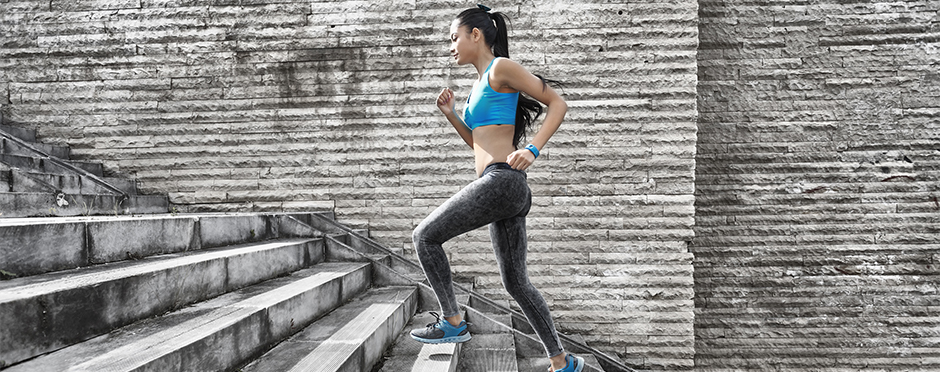
What is the “Core” of My Body?
Leave a CommentThe term “core” is frequently referenced when talking about strengthening. For example, you may have been told you need to “strengthen your core,” but what does this mean?
In this context, core is referring to the abdominal region, glutes and back muscles. These areas comprise the central part of your body and provide stability to movement. Runners who lack core strength may have poor control and stability, which can lead to injury from faulty mechanics.
The core is activated in three dimensional functional planes of movement, and therefore lacking control from the foundation can cause breakdown and injury. The core acts mostly as a stabilizer while the extremities are the prime movers. This means that if the core is not providing stability, the movers have no guide.1
With a dynamic activity like running, the core controls the force that is produced to prevent injury.1 For example, if a person running hits an ice patch, they have to react and catch themselves to maintain balance and continue on their workout. A runner who can quickly react but not recruit muscles quick enough will likely fall without an ability to control this from happening. A runner who does not have quick reaction but recruits their muscles quickly may overreact to the situation causing jerky movement and possibly a fall. The runner that reacts in time with quick and proper muscle recruitment has the ability to accept their body’s weight better to try and prevent the fall from occurring. Therefore, the ability of the core to provide stability and control the extremities will assure the load can be taken by the muscles to restore balance and hopefully achieve the goal of not falling.2
What studies show:
- Core strength can improve performance.3
- A comprehensive core and lower extremity strengthening program improves performance and movement biomechanics (the study looked at female soccer, basketball and volleyball players).4
- Hip strengthening leads to improved load and control through the legs, which may reduce injury.5
- Women demonstrate greater risk of knee injury due to greater hip/core weakness leading to poor landing mechanics. Strength and control training are an important part of training for female athletes.6
As runners and athletes, we can help prevent injuries by utilizing the strengthening solution: smarter, stronger and spring. We need to make our muscles smarter to control the movement, stronger to improve the force generated, and spring to optimize the speed of energy transfer in order to improve our performance.7
If you are interested in what specific exercises may be important to include in your training, visit one of our Athletico endurance specialists for a free assessment.
The Athletico blog is an educational resource written by Athletico employees. Athletico bloggers are licensed professionals who abide by the code of ethics outlined by their respective professional associations. The content published in blog posts represents the opinion of the individual author based on their expertise and experience. The content provided in this blog is for informational purposes only, does not constitute medical advice and should not be relied on for making personal health decisions.
References:
1. Kuhland, Jeff. “Do You Know What Your Core Really Is and What It Does?”Breaking Muscle. N.p., n.d. Web. 17 Jan. 2017.
2. Karageanes, Steven J. Principles of Manual Sports Medicine. Philadelphia: Lippincott Williams & Wilkins, 2005. Print.
3. Sato, Kimitake, and Monique Mokha. “Does Core Strength Training Influence Running Kinetics, Lower-Extremity Stability, and 5000-m Performance in Runners?”Journal of Strength and Conditioning Research 1 (2009): 133-40. Web.
4. Myer, Gregory D., Kevin R. Ford, Joseph P. Palumbo, and Timothy E. Hewett. “Neuromuscular Training Improves Performance and Lower-Extremity Biomechanics in Female Athletes.”The Journal of Strength and Conditioning Research 1 (2005): 51. Web.
5. Snyder, Kelli R., Jennifer E. Earl, Kristian M. OâConnor, and Kyle T. Ebersole. “Resistance Training Is Accompanied by Increases in Hip Strength and Changes in Lower Extremity Biomechanics during Running.”Clinical Biomechanics 1 (2009): 26-34. Web.
6. Jacobs CA, Uhl TL, Mattacola CG, Shapiro R, Ravens WS. Hip abductor function and lower extremity landing kinematics: sex differences. Journal of Athletic Training. 2007; Jan-March 42(1): 76-83.
7. Dicharry, Jay.Anatomy for Runners: Unlocking Your Athletic Potential for Health, Speed, and Injury Prevention. New York: Skyhorse Pub., 2012. Print.
